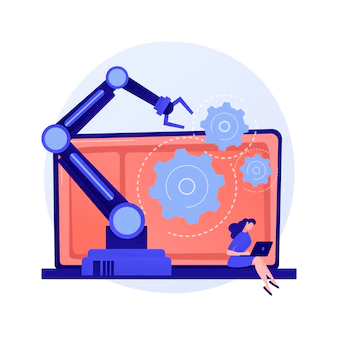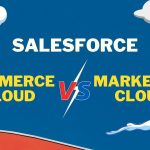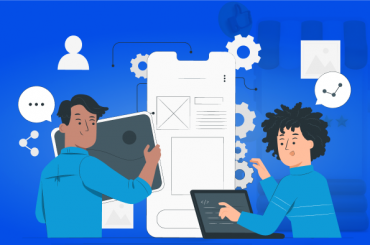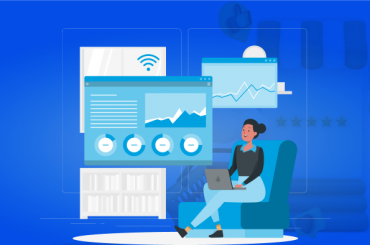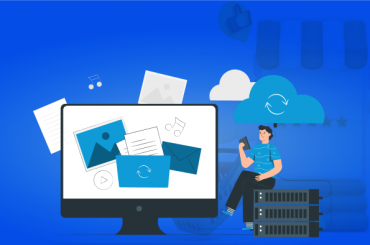Everything You Need To Know About Salesforce Headless Commerce
Last Updated | April 28, 2023
Table of Contents
New touchpoints for the consumer experience are emerging, and customer requirements are shifting. Any business simply can’t afford agility and flexibility in eCommerce. Organizations are decoupling the consumer experiences with a customer-centric from the back-end, Salesforce headless Commerce approach to constantly improve present touchpoints, embrace new ones, and give a uniform customer engagement across all the touchpoints.
To incorporate a business’s new material, classic architectural sites require minutes, if not hours, of updating.
With Salesforce Commerce Cloud integration converted into Salesforce headless Commerce, changes and enhancements may happen almost instantly. As a result, users can get a far better sense of a brand’s new looks much faster than before.
E-retailers may be able to provide buyers with a “greatest in branding” experience in terms of capability and performance as they become faster and more adaptable.
As a result, the merchant is able to remain ahead of the competition. It’s also a case of “who could get there first” in marketing, so being able to quickly roll out new websites or introduce new pages could be a key differentiator.
Marketers can also change their strategy on the fly in response to new growth markets, trends, or initiatives. In addition, you can quickly establish new niches, blogs, and online stores that are all linked to a unified eCommerce platform.
Questions about scaling commerce? Read this article Salesforce eCommerce integration to have a better understanding of the topic.
For example, this could include new APIs, applications, or systems. It’s also simpler to set up shopping carts for introducing new products or to integrate with an advertising automation system.
Our belief behind this article is to present you with everything you need to know about the Salesforce Headless Commerce so that your decision to go as a headless eCommerce business can be well-informed.
What Is Headless Commerce?
Image Credit: Bsscommerce.com
In its most basic form, headless commerce is the separation of an eCommerce application’s front end and back end. This design allows brands to develop anything they want, whenever they want. Above all, it allows businesses to improve the consumer experience.
Headless development is characterized by the use of APIs, interface managers, and solutions such as Heroku and Mulesoft, as well as the requirement of IT partners.
These tools are critical to any company’s innovation strategy since they provide new features and insights that engage with customers and keep them informed about their expectations.
If you work in eCommerce, you know how difficult it is to stay up with new touchpoints and experiences, and what an extraordinary amount of coffee consumption goes in. COVID-19 is merely hastening the process.
New experiences in a conventional eCommerce model can necessitate upgrades to both the front-end and back-end systems, turning even simple initiatives into major issues.
Questions? Ask about Salesforce Commerce Cloud pricing, implementation, or anything else. Also, Read this Guide What Is Salesforce Commerce Cloud
What Are The Benefits Of Salesforce Headless Commerce Over Traditional Salesforce Commerce?

Headless Is Not Off-Limits
Headless commerce enables organizations or startups with custom-designed experiences to stand out from competitors that use templates to develop distinctive products.
It aids merchants in developing their own distinct and quirky brand identities, and themes that identify them and can shake up a market swamped with whatever identifies them. Salesforce headless commerce partners help businesses to bring their idiosyncratic uniqueness to life.
Downmarket Extension
E-commerce software’s forerunners provided browsers with strong, linear control of contents and online businesses. In headless e-commerce, the front end of a site or app — the “head” — is isolated from the content repository or “body.”
Headless allows firms to construct storefronts only once, in accordance with company standards, in this approach. APIs enable developers to transfer the store to new channels, customer touchpoints, and even physical locations as time passes and business demands change.
Explore the complete Salesforce 360
Salesforce headless commerce In this age of low-code and no-code, which allows line-of-business workers to design sites and connect to back-end procedures without requiring developer support, eCommerce may seem to be anathema. Developers should be involved with headless e-commerce, even with SMB-friendly platforms like BigCommerce Web Design Company.
Headless e-commerce, on the other hand, has the ability to reach a far larger audience when advertisers can modify content utilizing simple CMS tools while using WordPress as the front end for the online display layer.
Agile Product Flexibility
Some businesses use headless e-commerce websites for a variety of reasons. Some organizations utilise the model because it allows them to accomplish things for our clients that they couldn’t do with any other configuration, such as giving incentives in content and product options.
Going with Salesforce headless Commerce has proven to be a wise move for many organisations, especially during and after the epidemic, when many businesses’ client bases increased into the hundreds of thousands.
Because their warehouses were empty in the blink of an eye, many of these businesses ended up selling out numerous products, had the lowest ROIs, and raised conversion rates.
Read: How to Boost Performance Salesforce Commerce Cloud
Faster integrations
Headless commerce is an API-based integration method for linking and exposing assets. APIs make it easier for software systems to communicate with one another, allowing for more smooth data connections and transfers.
This flexibility removes limitations and expands the range of applications for which the data model can be used.
It’s even possible to argue that headless commerce favors integrations. Consider the following analogy: if conventional e-commerce have been a car, headless e-commerce would be the engine.
You can have top-of-the-line headlights, but you’ll need to find someone who specializes in them rather than someone who specializes in engines. The same may be said for commerce without a leader.
You have the back-end infrastructure for essential e-commerce functionality, but if you want to improve the experience, you go elsewhere to find APIs that handle those challenges.
You don’t have to be concerned while you support that integration since the customer experience is isolated from the backend.
Consider the ostensibly simple case of email. Sure, with a few lines of code, you could create and send an email right from the e-commerce platform.
Nothing, however, can compete with some of the most popular email management software, such as MailChimp, which has its own API that could be accessed and connected.
Optimize Time To Value
The resources and time required to construct entire business intelligence and back end operations are the most important factors to consider while developing custom software.
In reality, back-end business logic, functionality, and capabilities account for up to 85% of the time spent developing software.
You may start from the point of completion with a headless commerce platform like Salesforce headless Commerce, which helps to focus on the customer experience and offer a finished solution for significantly less money, time, and effort.
You might also want to read: Benefits of using eCommerce Site Migration
Going Headless With Salesforce Commerce Cloud
Create a flexible headless commerce solution which boosts agility and creativity without putting your business at risk.
Salesforce provides a customizable headless commerce solution with extensible Commerce APIs that isolate back-end services from the customer experience on the front end.
This gives you the freedom to integrate commerce into any client touchpoint, including Instagram, Facebook, and more.
IT teams benefit from contemporary architecture and programmer efficiency tools, while business users benefit from innovation to drive growth, thanks to Salesforce headless commerce solution.
You might also want to read: Salesforce Merchandising
How Salesforce Headless Commerce Optimizes The Customer Experience Optimized Instantly Reflective Designs Instantly
A Salesforce headless Commerce offers amazing lightweight designs for your eCommerce business. These themes and designs will gather huge traffic and increases your conversion rates to new heights.
The customer experiences will be greater as the response time is reduced and a customer navigates through your Salesforce headless Commerce store without any delays or waiting; hence they end up purchasing from your store before they can change their mind and abandon the cart or leave as is.
Amazing Idiosyncratic Customer Experiences
The eCommerce marketing staff should be proactive and cover all aspects of the consumer experience.
Because of the modular infrastructure, Salesforce headless Commerce enables for more flexibility in the design, development, and implementation of storefronts, providing for comparable consumer experiences across all touchpoints.
Several more integrations and adjustments can be implemented without causing any disruption to the backend. This enables a higher level of customization. The backend data keeps track of what a buyer has bought.
This information can be used to personalize all the touchpoints.
Integrated Experience With Consistency
Salesforce headless commerce manages to challenge downstream links across all user experience touchpoints in the customer lifecycle, commerce relies on integration.
Smart Insights
The API layer that’s built into a headless system takes data from the platform provider and distributes it to all touchpoints.
The backend system is unaffected by the addition of a new frontend, and customers receive a uniform experience across all touchpoints.
Without the constraints of past design, headless commerce could supply items and services straight to customers in any format. eCommerce businesses can reach a larger audience and enhance revenues by expanding in this way.
Enhanced Geolocation Techniques
Salesforce headless Commerce enables a new site to be put up in days rather than months when beginning a new geographic area. Companies simply need to design the CMS once, and it will take care of everything else.
For apps and websites, Salesforce headless Commerce systems could build subsets of page content.
They live in the backend of a headless CMS and allow multiple, location-specific channels to create tailored messaging for the right audience. This enhances the customer’s experience and increases their likelihood of purchasing.
Multilingual Management
Before distributing material, content creators can use Salesforce headless Commerce to precisely translate languages. They can also use the right characters and alphabet to encode the content.
Richer Customer Experience
eCommerce organizations can now have better control over the aspects that consumers interact with on their websites, allowing them to become more creative also with the material they publish. They can employ experimental design to give people new and improved experiences.
Salesforce headless Commerce universal compatibility means that the website is always available, independent of the gadget or browsing format. The onus isn’t any longer on IT to establish a fully responsive design to prevent items from disappearing or not presenting properly on various devices.
Added Security
Salesforce headless Commerce also has the added benefit of providing a higher level of security, which is something that traditional systems typically lack. For example, the API used to offer content is generally more resistant to online assaults than other software systems.
A headless solution’s administration component is also hosted on a separate server and domain. The CMS functionality in a headless system can be concealed beneath layers of code rather than being exposed directly, as it is in a regular CMS.
Reduced Crashes
Headless commerce is that it can help online business websites to crash less. Ecommerce sellers who are unable to scale during moments of high traffic suffer confusion and a public relations problem.
When a website can’t handle a big amount of traffic, it crashes.
To minimise traffic surges from breaking the system, headless architecture is intended to scale instantly. Users can experience uninterrupted, faultless performance with dynamic scaling capabilities.
At peak times, it’s also easy to add greater connectivity to baskets and payment services, ensuring smooth customer service.
Companies may scale and add new technologies, apps, channels, and touchpoints as needed with a headless commerce system. It’s critical to be able to alter the frontend user experience, but it also intended recipients a better grasp on their data.
Final Words
Overall, Salesforce headless Commerce lets firms anticipate client wants rather than analysing, planning, designing, creating, and launching. Although the headless architecture requires more upfront groundwork, it pays off in the long run by allowing merchants to experiment with new concepts.
While still employing sophisticated platforms like Salesforce B2B Commerce Integration, and Salesforce B2C Commerce, headless technology allows engineers to aid in optimizing company experiences and differentiating their brands.
The headless method can be used by businesses to give a rich experience and quickly test new concepts. It combines best-in-class commerce capability with a top CMS system to give organizations the greatest flexibility possible.
Contact Folio3 and their Salesforce Commerce Cloud consultants, to gain all of the advantages of an integrated platform while leveraging Salesforce commerce cloud development key strengths.




